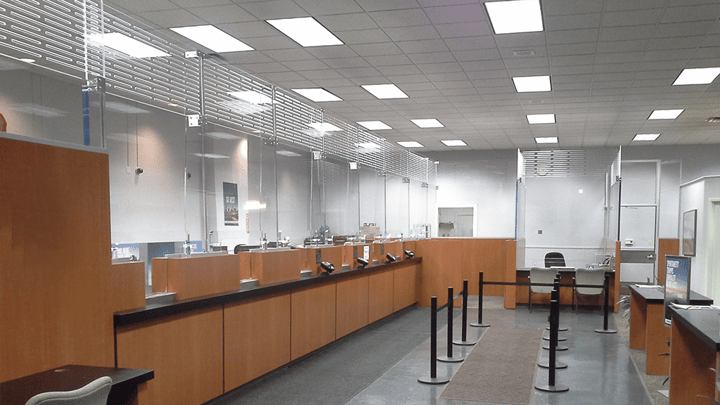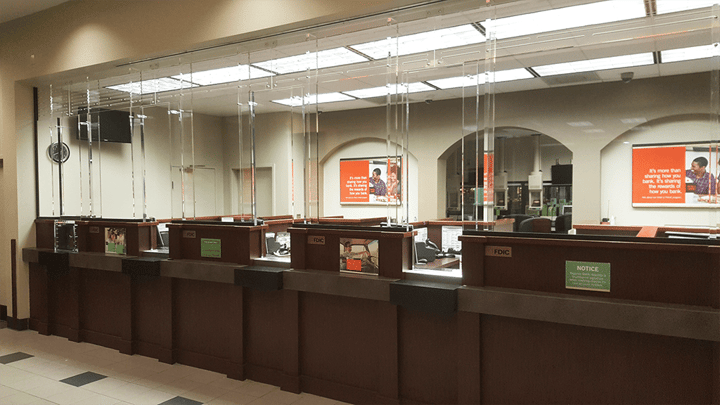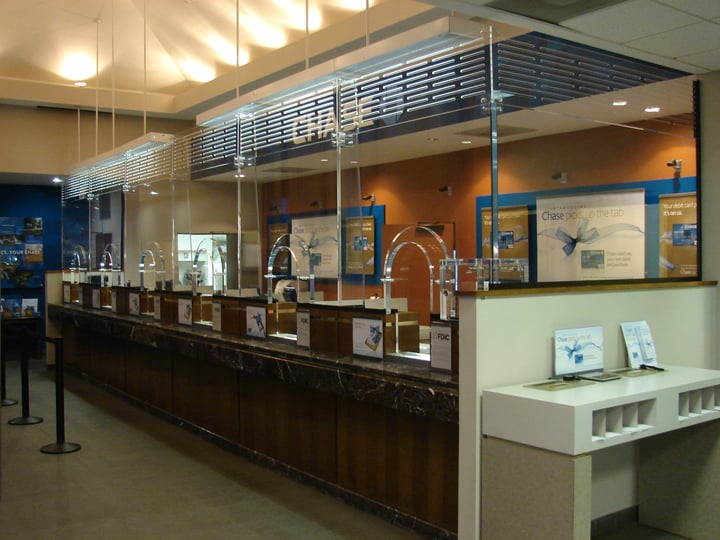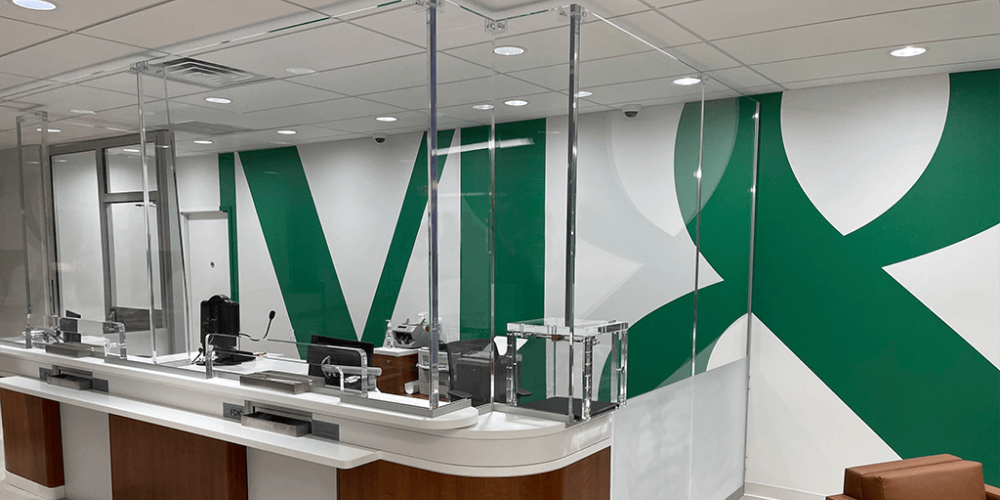A priority for many financial institutions is right-sizing their branch locations and tearing out old barrier systems—often dating from the 1990s—to replace them with modern solutions that are both better looking and facilitate better communication. Let’s explore the latest trends in bank security, essential features in bank security windows, and how to prioritize aesthetics and communication.
Trends in Bank Security Windows and Barriers
Total Security Solutions CEO Jim Richards has decades of experience designing, engineering, fabricating, and installing bank security windows and barriers. In the last several years, he’s noticed several trends that will affect architects and contractors in the coming years.
First and foremost, banks are getting smaller. “California is a good example,” he notes. “California used to have huge teller lines in a small number of branch locations. Oh, they used to have just monster banks, high marble ceilings, twenty stations. Now they’re going to more branches, each with a much smaller footprint.”
Nationwide, most banks have around five teller stations. And while there is some new construction (especially in the fastest-growing communities in Texas and the Southeast), more common are complete renovations of existing branch offices. These renovation projects typically entail removing ballistic barriers that are ten to twenty years old and replacing them with something with a similar security rating but a much lighter-weight visual impact.
Three Essential Features of Bank Teller Windows and Station Security
There are three universal elements to a bank teller security window and barrier:
1. Glass
Most banks favor UL-rated Level 1 or 2 ballistic acrylic for their bank teller window glass. This is tested and rated to stop the pistols most commonly used in armed robberies. (If you need a refresher, this two-minute video will teach you everything you need to know about UL-rated ballistic materials.)
2. Counters
The counters at a bank teller line will have several modifications to increase their ballistic security. These include adding layers of ballistic fiberglass (so the counter can stop the same bullets as the teller window) and steel cash trays at each station (so they can safely transact through the barrier). A larger passer can handle bulk coin transactions and accept packages.
3. Doors
A custom-built bullet-resistant door will always blend better with the decor than something mass-produced (which will usually be steel and look like it came from a county lock-up). Most bank teller line doors have an electric strike plate so the tellers can easily buzz each other in.
The most prominent bulletproof feature of most banks—the drive-through window—is the one piece the contractor won’t really have to worry about. Jim points out that these are strictly defined in so many building codes that they are, for practical purposes, standardized: bullet-resistant, composed of steel and one-inch to one-and-three-sixteenths inch laminated glass, sold as a ready-to-install unit by a small handful of manufacturers.
Prioritizing Aesthetics and Communication in a Bank Teller Security Window
Aesthetics and clear communication are more important than ever in banking. Customers who visit a bank almost invariably do so because they need to speak to someone, usually to sort out something complicated. Therefore, the bank’s security barrier needs to facilitate clear and easy conversation while deterring crime and keeping everyone as safe as possible.
This is part of the reason TSS typically recommends a free-standing barrier for banks (like the one shown below). “Minimal framing isn’t just more aesthetically pleasing,” Jim points out. “People have an easier time communicating when they have unobstructed views of each other’s faces. Also, it doesn’t hurt that those clear sight lines mean fewer blind spots for a would-be robber to take advantage of.”
Clear voice communication is also important in banking, where people are more likely to be discussing sensitive matters.
“We always recommend either arch window or baffle systems for banks. Never an intercom—a technology people often find frustrating—or a hole-and-backer, which can make it hard to see the face. With an arch window or baffle system, clear voice transmission is built into the window itself.”


Looking to start a bank teller window security project? TSS advises always taking a “systems approach” to physical security in banks. We also offer a free how-to guide for banks looking to improve their ballistic security.
Questions? Check our banking and financial security barrier FAQ or contact our ballistic security experts today.

